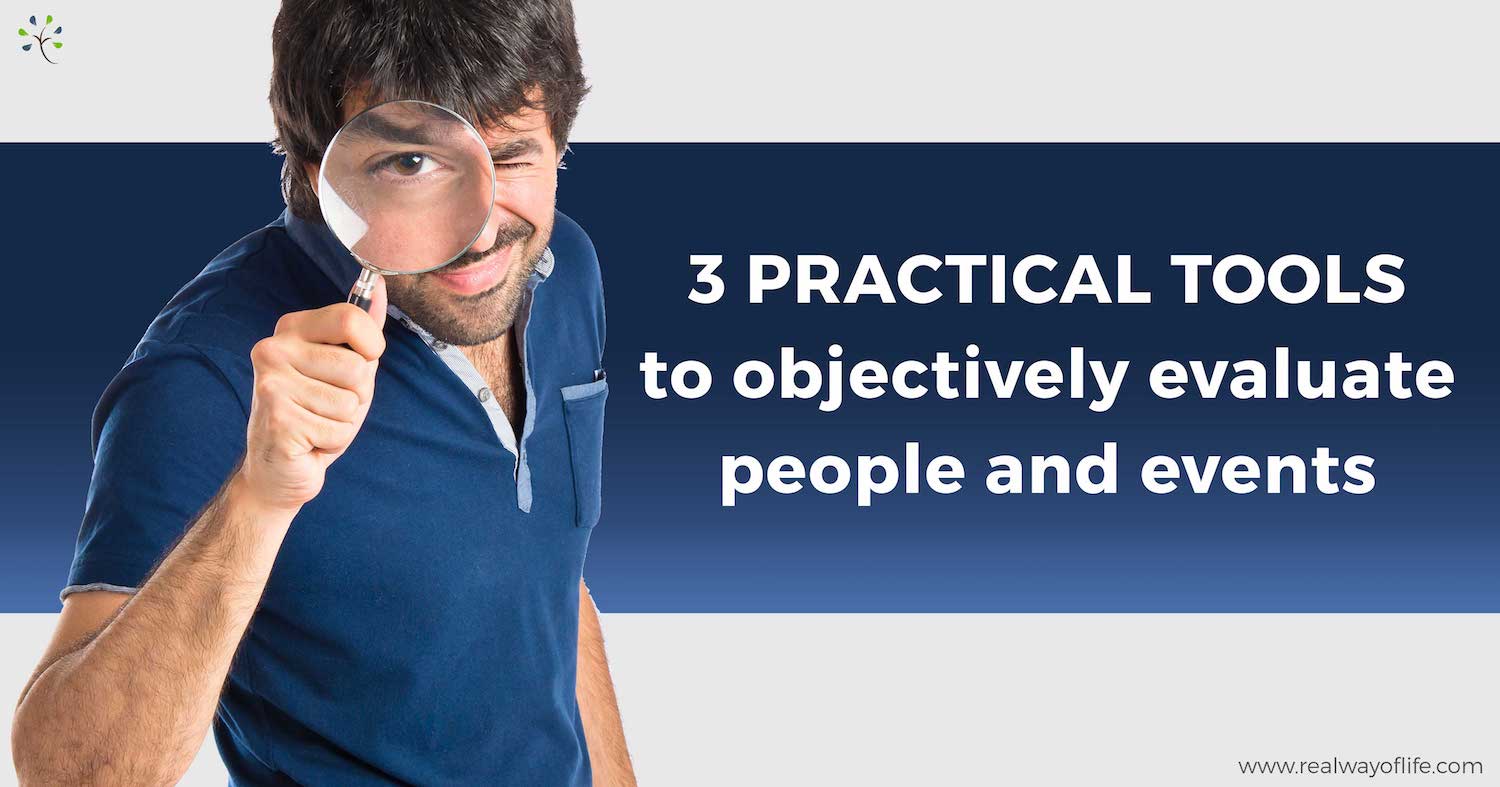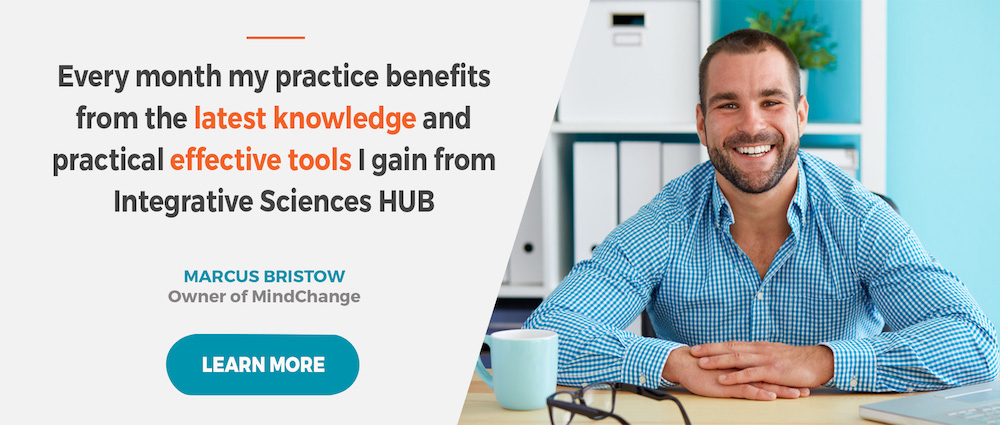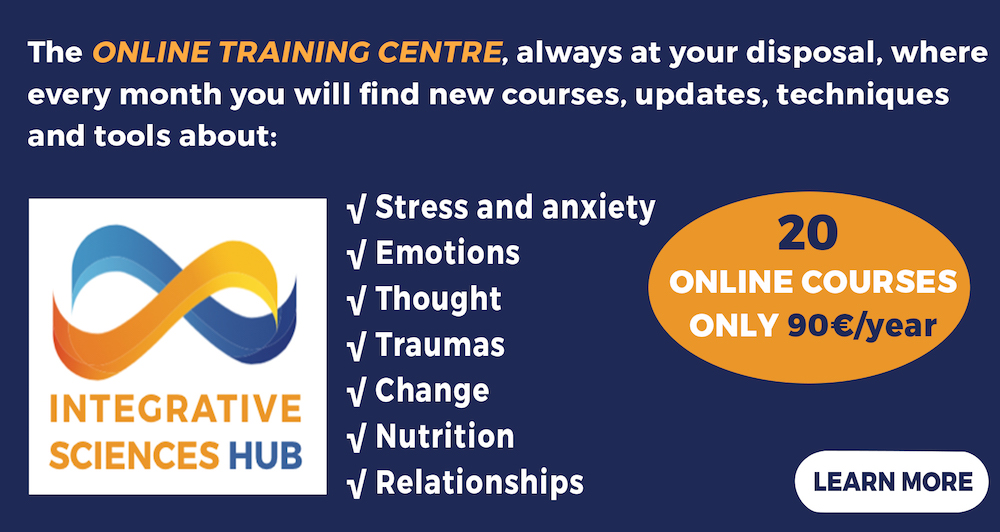
15 Aug 3 practical tools to objectively evaluate people and events
We all think we’re right; it’s everyone else that’s wrong. However, let’s try asking ourselves these questions…
- Is our evaluation of a specific event objective?
- Is that person trustworthy?
- How did we become persuaded of this?
- Who is right and on what basis?
- Do we remember precisely what took place?
A useful way to answer these questions is to start before an event takes place.
In fact, our previsions can “overlap” on reality as we perceive it.
When we expect a certain type of behaviour, a certain type of environment or even of flavour, this feeling of anticipation tends to impose itself very forcefully on reality, often replacing it, or making us perceive events and outside behaviours as something that is halfway between our expectation and objective reality.
This is a bottom-up process: the neural pathways that carry previsions are stronger and more solid than those that carry sensory data (Feldman Barrett et al., 2017).
A number of mental and emotional processes that can push perception even further away from reality rest on this neurological foundation.
It is a forceful mechanism that impacts how we live and how we interpret the world, on conflicts and on misunderstandings that are based on ‘seeing things differently”.
This process also impacts our satisfaction and motivation processes in relation to the (partially skewed) memory that will be created.
As aptly highlighted by the Nobel prize winner Daniel Kahneman, we tend to focus our memories on emotionally salient details, losing sight of the overall experience. This is what happens when, for example, an annoyance at the end of an evening out makes us reinterpret the whole night negatively. We lose sight of the different moments, the evolutionary value of our experiences, of momentary enjoyment and of other important elements which overall are far more important than the single negative detail.
All these processes anticipation, prevision, perception, emotion, thoughts and memories, play a key role towards our well-being and in our ability to live fully.
Understanding how they work enables us to use them to our advantage and create new physiological and functional systems.
1. SENSORY PERCEPTION AS A NEW STARTING POINT
(moving on towards MEMORIES, BELIEFS, EMOTIONS etc.)
One first strategy is that of using unnatural or paradoxical sensory stimulation (which can be obtained by simply doing something we usually do with our eyes open, with our eyes closed, or by alternating sensory perception with alternate row bandaging, or by amplifying usual postures or movements). Thus, sensory pathways can take over and recover their original strength over objective data compared with predictive pathways.
In this area there are numerous techniques that can be used during the specific dysfunctional moment (emotional peak, conflict, stressing event etc.) or during a session (mental and/or physical) to re-create favourable conditions to reprocess memories, beliefs or states of activation/deactivation correctly.
2. GOING “BACKWARDS” TO MOVE FORWARDS
Another useful strategy, taking the evaluation of a memory as a starting point, both for its emotional or testimonial value, regards the effectiveness of retelling events backwards: from the end to the beginning. Thus, our mind is unable to jump forward and doesn’t make connections with other environments or similar experiences.
It is therefore possible to recover clearer information, details that had gone lost and to distinguish between three separate factors that are often confused: facts, opinions and emotions felt.
It is also important to distinguish between the recalling of a useful memory (to learn, elaborate, change strategy, release etc.) with an empty repetition, with no evolutionary value, that is only able to keep pain or negative evaluation alive (feeling sorry for oneself, passiveness, failure etc.).
To work on these aspects, it is useful to leverage different levels of Narrative (historical, episodical, contextual etc.) as well as all the Flows channels (ie. The ‘flows’ as they develop and more or less flow. These can be: ideation, communication, posture, movement, energy, motivation, engagement etc.). This is what we do in depth in the Modulation phase of the Integrative Functional Patterns.
3. WORKING ON TWO TEMPORAL AXES
One final very effective strategy is to create situations in which conditions of synchrony and a-synchrony alternate in correlation with reaction dynamics to significant interpersonal emotional or stress phenomena.
Previsions can be two types:
- Step-by-step ones – are mainly managed in a non-conscious way and draw from physical and procedural memory allowing a fluid and rapid adaptation to the situation taking place (taking an exam, sitting in a meeting or having an argument);
- Long term ones – where logical thought plays a key role and which require more time for preparation as well as the ability to wait.
Practice in managing both types, and the processes that govern them, helps develop evolved self-regulation and performance resources as well as capabilities that are fully under control and fluid.
AND FURTHER BEYOND…
We’ve only analysed a teaser of what is possible within this article.
So far, we’ve only (partially) analysed 3 of the 8 macro-phases that compose a type of behaviour, a stress or adaptation response in their functional patterns.
If you want to further analyse these themes of change, care, progress and 360-degree development as part of a practical and structured system you can easily do so with our method. It provides total freedom to follow a regularly updated development programme via a series of constantly updated and expanding modules on the Integrative Sciences HUB (visit>).
Annual online subscription provides you with new courses every month, updates and techniques which are always at your disposal online.
Please Note: it is still possible to subscribe at a highly competitive reduced fee for a limited time only.





